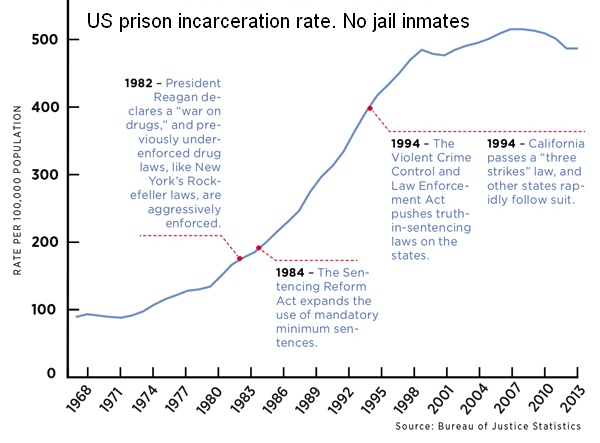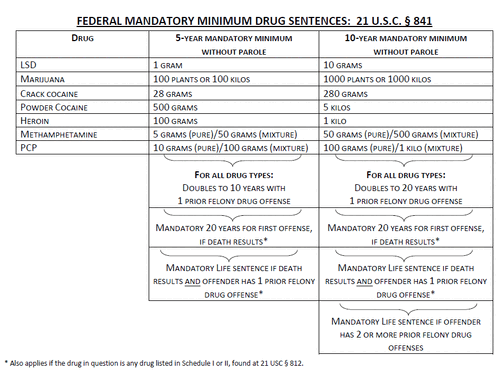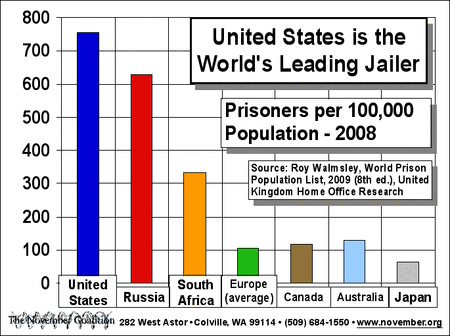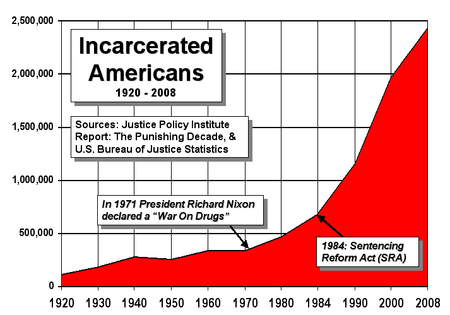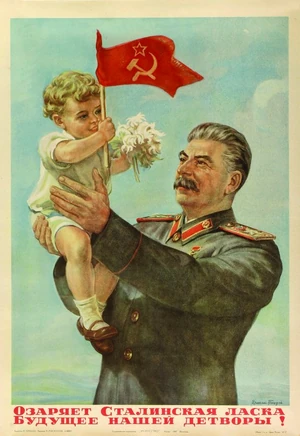Top
- Share links: Drug War, drugwar, drug war, drug wars, DrugWar, war, and majority. This article was written by Timeshifter. See drug war charts. See categories: Charts and graphs and maps. See also: Private prisons and private power. See The U.S. Drug War. Republicans lead. Democrats follow. Everybody pays. See Race, ethnicity, and the drug war. See Cannabis is safer. See Brutality and the Drug War. See Cost of U.S. drug war.
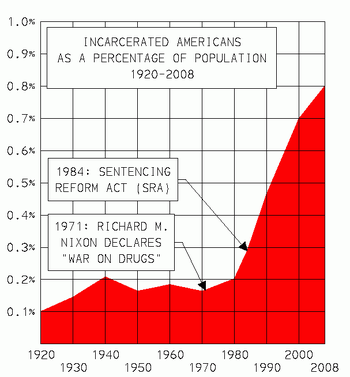
Let us not forget about the astronomical increase in the number of correctional officers, too. 469,500 in 2012. See: Correctional Officers : Occupational Outlook Handbook : U.S. Bureau of Labor Statistics. US incarceration peaked in 2008.
See: Number incarcerated in the USA peaked in 2008. And: Cost of U.S. drug war.
Incarceration Nation.. By Fareed Zakaria, Time magazine, April 02, 2012. "America's War on Drugs Drives High Incarceration Rates."
| Drug war + Trickle-down Reaganomics, = mass incarceration and mass control. |
| See article: Trickle-down economics plus drug war. |
| The majority of people incarcerated in prisons and jails in the USA are in due to drug-related offenses, crimes to get money for drugs, or drug-related parole or probation violations. Wikipedia: Drug-related crime. The number of inmates in the USA has increased almost 5 times over since 1980. It peaked in 2008. Obama's Democrat landslide in 2008 turned the incarceration rate around. The cost of the U.S. drug war is at least 1.5 trillion dollars. Cannabis is safer! Share link. |
- See also: Drug war causes high U.S. incarceration rate.
489,000 in 2013 (see chart below). For drug offenses alone.
Need to add in drug-related burglary, robbery, murder, etc..
All to get drug money, defend turf, etc..
-

-
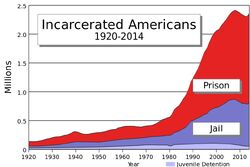
Obama helped turn around the Reagan-Bush War on Pot, mandatory minimums, mass incarceration. See: US incarceration peaked in 2008.
-

USA: Peak of 7.3 million people in 2007 under adult correctional supervision: On probation or parole, or incarcerated in jail or prison. About 3.2% of the U.S. adult population, or 1 in every 31 adults. More info here. See template.
-
In 2009 26.4% of those in federal and state prisons, or on probation or parole, were in due to drug offenses. Jail numbers are not included below. 
How it happened
Chart below is a state and federal prison incarceration rate timeline. Jail inmates are not included.
Chart source: The Score: Why Prisons Thrive Even When Budgets Shrink. In The Nation. By Mike Konczal and Bryce Covert, September 24, 2014. Quote below from article (emphasis added):
Explosion in incarcerations since the 1980s. Under the "war on drugs," aggressive policing drove up the percentage of those in state prisons for drug offenses from 6.4 percent in 1980 to 22 percent in 1990. More minor drug charges made it easier for prosecutors to push felony charges by citing a defendant’s prior record. These convictions triggered harsh sentences under new guidelines like California’s "three strikes" law, passed during the same period. The enforcement of these punitive new laws was, and remains, racist: according to the ACLU, black people are 3.73 times more likely to be arrested for marijuana possession than whites, though they are equally likely to use. This, in turn, makes black people vulnerable to the rest of the criminal-justice system.
See also: commons:File:U.S. incarceration rates 1925 onwards.png.
- See also: Drug war charts and maps. And: Brutality and the drug war.
Emphasis added to the quotes.
- Prisons & Drug Offenders | Drug War Facts.
- Drugs and Crime Facts. U.S. Bureau of Justice Statistics: "In 2004, 17% of state prisoners and 18% of federal inmates said they committed their current offense to obtain money for drugs. In 2002 about a quarter of convicted property and drug offenders in local jails had committed their crimes to get money for drugs, compared to 5% of violent and public order offenders. Among state prisoners in 2004 the pattern was similar, with property (30%) and drug offenders (26%) more likely to commit their crimes for drug money than violent (10%) and public-order offenders (7%). In federal prisons property offenders (11%) were less than half as likely as drug offenders (25%) to report drug money as a motive in their offenses."
U.S. statistics for drug-related homicides are very inadequate.
- Drug Related Crime [1]. March, 2000 article. Office of National Drug Control Policy. Article quote (emphasis added):
Why Statistics on Drug-Related Crime are Difficult To Interpret: Homicide as an Example. ... The FBI does not include as drug-related a murder that occurs during a robbery or a burglary committed by someone under the influence of drugs or a murder that occurs during a robbery committed to obtain money to buy drugs. In these cases, the homicide is recorded by its relationship to the most serious offense only, and robbery and burglary are more serious than drug trafficking in the FBI offense classification and in most State laws. Thus, current FBI homicide information may not categorize a large number of drug-related murders as so related.
- Drugs and Crime Facts. U.S. Bureau of Justice Statistics. Has drug-related homicide chart from 1987-2007, with rates of 3.9% to 7.4% for drug-related homicides. "The Uniform Crime Reporting Program (UCR) of the Federal Bureau of Investigation (FBI) reported that in 2007, 3.9% of the 14,831 homicides in which circumstances were known were narcotics related. Murders that occurred specifically during a narcotics felony, such as drug trafficking or manufacturing, are considered drug related."
- OPED: War Won't Solve the Drug Problem. July 15, 1999. Washington Post. By Rob Stewart, of the Drug Policy Foundation. "In 1988, just over half of the murders in the city [New York City] were 'drug-related.' But once the researchers examined the circumstances of the murders, they discovered that the clear majority, 74 percent, were results of the drug trade, not drug use (14 percent) or the need to get money for drugs (4 percent)."
- The 50 Most Violent Cities In The World. (On one page). Nov. 10, 2014. By Pamela Engel and Christina Sterbenz. Business Insider. "US cities also made the list, led by Detroit at No. 24 and New Orleans at No. 26." And Baltimore at 36, St. Louis at 45.
Parole violations and drugs
16.1% of parole violators returned to state prisons in 1997 for drug related violations; for failing drug tests, possession of drugs, failing to report for drug testing, failing to report for alcohol or drug treatment. Info is from Table 21 (below) of the PDF for this report: Trends in State Parole, 1990-2000. NCJ 184735. October 2001. U.S. Bureau of Justice Statistics.

See image info.
Sentence length causes huge incarceration rate
| Mandatory minimum sentencing charts. |
|---|
|
First mandatory minimums chart below is from an older FAMM report, "Correcting Course: Lessons from the 1970s Repeal of Mandatory Minimum Sentences". FAMM is Families Against Mandatory Minimums. [2]. See Wikipedia: Mandatory minimums. The Fair Sentencing Act of 2010 increased the amounts of crack cocaine required to trigger 5 and 10 year sentences. [3]. See revised charts since then. Share link to this page. For charts of all federal mandatory minimums (not just for drug offenses), go here. Later chart with revisions, such as the amount of crack cocaine required for various sentences: |
|
American Exception. Inmate Count in US Dwarfs Other Nations'. April 22, 2008. New York Times. Page 1, section A, front page. Archive. From the article (emphasis added):
|
|
|
November Coalition graph. Some Congressmen and police who prosecuted the War on Drugs now believe it caused a large increase in the United States incarceration rate. See Law Enforcement Against Prohibition, and larger chart with sources. See template. Incarceration peaked in 2008. |
|
- 2003. Federal Judge Quits, Calls Judicial System Unjust. Associated Press (AP) story, National Public Radio interview, and Judge John S. Martin's statement. "The result, he said, is a slew of lengthy prison sentences for low-level drug dealers 'who society failed at every step.' ... While many judges have criticized sentencing guidelines, it is unusual for a judge to publicly cite the frustrations of the job in stepping down." -June 25 2003 AP story. See also: Let Judges Do Their Jobs. By Hon. John S. Martin Jr..
- Dissenting Opinions of Judges, Federal Drug Sentencing, Mandatory Minimum Sentences. A list of many articles by judges. At November Coalition.
Mandatory Minimum sentences or truth in sentencing
| Some people don't know that the National Rifle Association had a large part in causing the huge increase in the U.S. incarceration rate. The NRA strongly lobbied state-by-state for mandatory minimum sentences (also known as "Truth in Sentencing"), and "Two and Three Strikes" laws. Mandatory-minimum sentences, and long sentences in general (compared to other nations), are the root cause of the astronomical US incarceration rate according to a New York Times article. The majority of people incarcerated in the U.S. are in prison or jail due to drug-related offenses, crimes to get money for drugs, or drug-related parole or probation violations. |
See Wikipedia: Mandatory sentencing. See also this page. Mandatory Minimum sentencing is often used for non-violent crimes such as drug possession. It is a modern-day way to create concentration camps for drug-using "undesirables." Sentences that usually do not allow parole until at least around 80% of the sentence served. Federal laws, and most states, have mandatory minimums. The majority of U.S. prisoners are in due to the drug war in some way or another.
See Wikipedia: War on Drugs, and Wikipedia: Sentencing Reform Act.
Life for pot
- See main article: USA. Life for pot. See also: Number of marijuana prisoners in the USA.

- Life in prison for selling marijuana: Meet the people new pot laws forgot. MSNBC. 8 Sep 2015. [4][5]. "At least 67 people are in prison right now, sentenced to die there for selling marijuana". And: LifeForPot.com. And: POW420.com also lists some cannabis lifers. Facebook: Life for Pot. And: Life In Prison For Pot And Other Travesties Of Marijuana Prohibition. 4 Sept. 2014. Forbes.
- Jeff Mizanskey, life without parole: Missouri man freed after spending two decades in prison for marijuana charge. 1 Sep 2015. Guardian. [6]. And: Grandpa Doing Life Without Parole. [7][8]. Nazi Republican prosecutor.
- Saudi Arabia beheads 4 for pot. [9][10][11][12]. Religious Right: Supported Life for Pot. [13][14][15]. Republican Speaker of the US House of Representatives Newt Gingrich proposed a law that would execute people for 2 ounces of marijuana.
- Life for Pot Prisoner Larry Duke Released! [16][17][18][19][20][21][22][23].
Cannabis arrests

Nixon and Reagan. War on Drugs
Nancy and Ronald 6 Wilson 6 Reagan 6 riding the drug war Beast in 1986. Note Nancy's "Just Say NO" sign. Larger image.
 |
Republican evil, Democrat complicity, corporatist control: The Drug-War Industrial Complex.
Drug War Invented by Nixon to Extend His Power. By Fintan O'Toole. Aug. 13, 1999. Irish Times.
In June 1971 Richard Nixon declared a "War on Drugs."

|
| Tricky Dick Nixon (above) has won his drug war! The Prison-Industrial Complex. Corporatist Dictatorship. A Nixonian "enemies list" that almost everyone is on at some time. |
Papa Bush's massive drug war escalation
- 2nd nationwide televised Bush speech on drugs on September 12, 1989: Quote from speech:
Some think there won't be room for them in jail. We'll make room. We're almost doubling prison space. Some think there aren't enough prosecutors. We'll hire them, with the largest increase in Federal prosecutors in history.
- Life sentence for buying weed? 25th anniversary of Papa Bush's War on Drugs escalation speech on September 5, 1989. The first prime time address of his presidency. Result: Life for pot.
Reagan, and propaganda of incarceration nations
- See also: Reagan's war on cannabis.
- Reagan's war on cannabis is where the U.S. incarceration nation began. Number of marijuana prisoners in the USA: 40,000+ in 2011. All drug offenses: 489,000 in 2013.
-
Ronald Reagan, 1980 campaign speech: "Leading medical researchers are coming to the conclusion that marijuana, pot, grass whatever you want to call it, is probably the most dangerous drug in the United States, and we haven't begun to find out all of the ill effects, but they are permanent ill effects. The loss of memory for example." -

Obama helped turn around the Reagan-Bush War on Pot, mandatory minimums, mass incarceration. See: US incarceration peaked in 2008.
Propaganda of incarceration nations. Reaganism is about drug war, code-word racism, hate radio, mass incarceration, and above all, trickle-down economics (Reaganomics).
| Drug war + Trickle-down Reaganomics, = mass incarceration and mass control. |
| See article: Trickle-down economics plus drug war. |
-

Nancy Reagan and Ronald Reagan of the USA. The "Just Say No" campaign.
-

Joseph Stalin of the Soviet Union.
-

|
See Wikimedia Commons: Category:Government propaganda. Note the "glorious mission" or "glorious war" nature of much propaganda. Like the Republican-led Holy War, the "War on Drugs". See Wikipedia: War on Drugs. It is really a war on some drug users. This particular glorious war was reinvigorated by the cult leaders, Ronald and Nancy Reagan. The B-movie actor Ronald (6) Wilson (6) Reagan (6) is still worshiped like a God (or idol) by some segments of the Republican Party.
Welcome to America
| "Welcome to America, home to 5% of the world's people & 25% of the world's prisoners." NAACP, ACLU File Lawsuit Against City of Philadelphia for Rejecting Criminal Justice Reform Ad. Article by NAACP. Lawsuit filed October 19, 2011 during the period of the Occupy movement. Also see the ad banner article by Courthouse News Service. The drug war and prisons are big business, and a big part of how the 1% controls the 99%. See Facebook comments about the banner. The Republican Party leads the racist drug war.
Incarceration peaked in the USA in 2008. <<--See that article for sources, stats, and charts for the banner. Most inmates are incarcerated due to the drug war.  Image info. See billboard and stats. |
|
| Chart below is from a July 2000 report: |
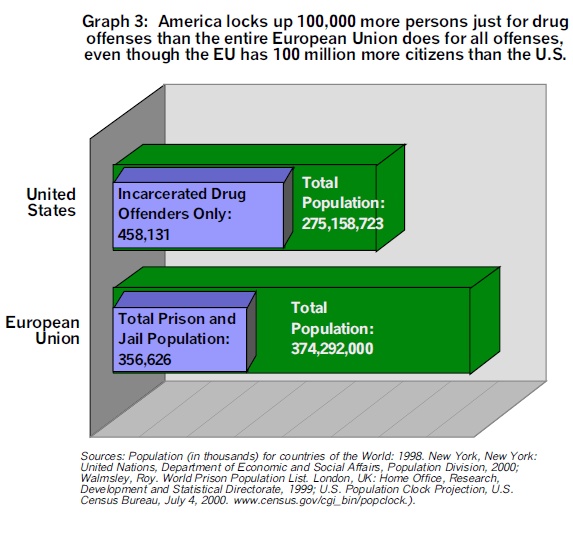 From this July 2000 report: Poor Prescription: The Costs of Imprisoning Drug Offenders in the United States. From the report: "Nearly one in four persons (23.7%) imprisoned in the United States is currently imprisoned for a drug offense. The number of persons behind bars for drug offenses (458,131) is roughly the same as the entire prison and jail population in 1980 (474,368)." |
Cannabis is safer
Return to top.
Obama correctly said that cannabis is safer than alcohol. See: Cannabis is safer. He also said marijuana should be treated more as a public health issue than a criminal one. And: Obama signals support for legalizing medical marijuana. [24]. See video.
USA. 1 in 10 deaths of working-age adults are alcohol-related (disease, overdose, car crashes, falls, violence, etc). 87,798 per year, 2006 to 2010. [25][26][27][28][29]. See longer article: Cannabis is safer.
Imagine if Mitt Romney had been elected President in 2012 instead of Obama.
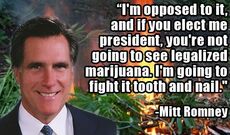
Obama on marijuana legalization. [30]. "My suspicion is that you’re gonna see other states start looking at this". The Washington Post. Jan. 22, 2015.
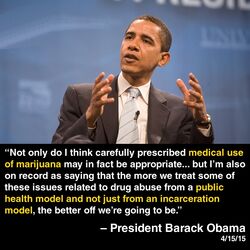
Above quote is from Sanjay Gupta interview of Obama on April 15, 2015. Interview aired on CNN on April 19, 2015. [31][32][33].
Obama administration asks Supreme Court to reject lawsuit filed by Republican governments in Oklahoma and Nebraska to stop legal marijuana in Colorado [34]. December 2015.
 Obama helped turn around the Reagan-Bush War on Pot, mandatory minimums, mass incarceration. See: US incarceration peaked in 2008. |
Holder's Legacy: Steering Away From the Drug War and Mass Incarceration. [35]. Attorney General Eric Holder (2009-2015) under President Obama.


